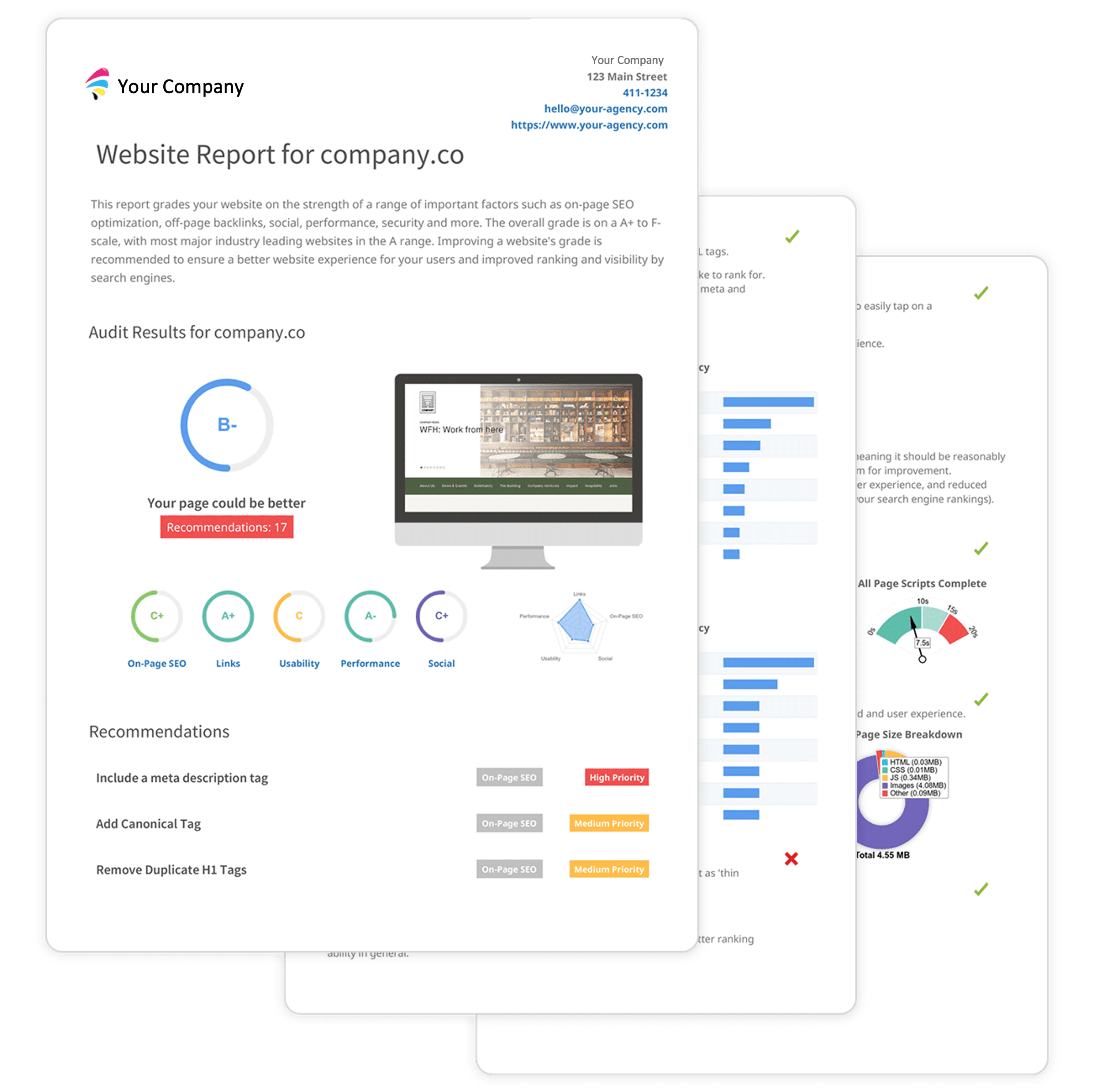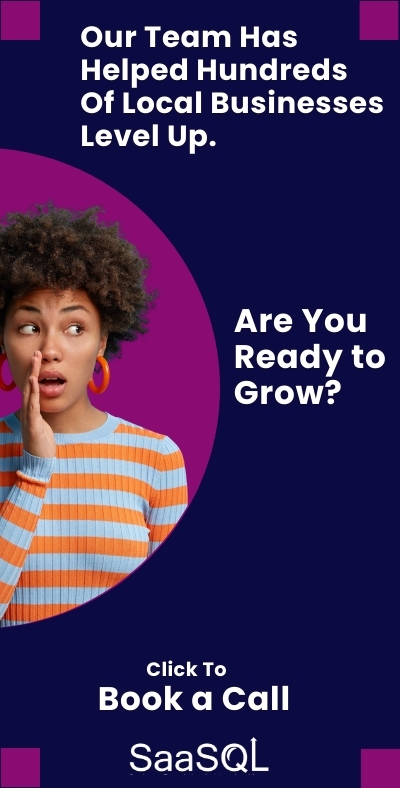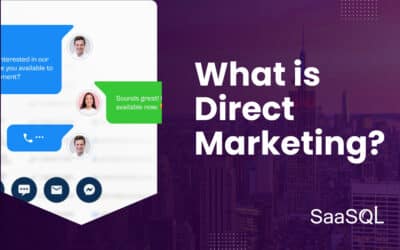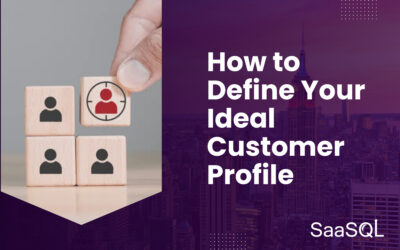For local small and medium-sized businesses, the importance of low cost marketing tactics cannot be overstated. It is not just about stretching dollars; it’s about maximizing impact. It’s about ensuring that each element of the core marketing strategy not only reaches the right ears and eyes but also converts attention into engagement, loyalty, and sales. From leveraging digital platforms to engaging in community-driven efforts, the need for strategies that provide a substantial return on ad spend (ROAS) is crucial.

However, without the right tools and knowledge many SMBs find themselves at a disadvantage, unable to tap into the full potential of their marketing efforts. As local SMBs continue to strive for growth in a market that is constantly evolving, the mission is clear: to take advantage of the strategies that provide the greatest ability to engage with targeted audiences and drive efficient growth. In that spirit, here we’ll dive into a variety of low-cost marketing tactics that can transform challenges into opportunities for growth and innovation.
[ez-toc]
 Defining Your Market – The Foundation of All Low Cost Marketing Tactics
Defining Your Market – The Foundation of All Low Cost Marketing Tactics
The Importance of Your Target Audience
The cornerstone of any successful marketing strategy is a well-defined target audience, also known as your Ideal Customer Profile. For small and medium-sized businesses zeroing in on who their customers are is critical to maximizing the potential of low cost marketing tactics.
From improved campaign targeting that limits wasted budget, to tailored messages that improve conversion rates, the process involves going beyond basic demographics and delving into the psychographics of your market – their interests, behaviors, and preferences.
Begin by analyzing your current customer base and identifying common characteristics and interests. Which segments bring the most business? What shared attributes can you find? Are there underserved niches within your market that you can capitalize on? It’s also essential to consider the buyer’s journey—awareness, consideration, and decision—and understand what motivates your audience at each stage.
By mapping out this journey, you can create a targeted strategy that speaks directly to their needs and concerns at the right time. To learn more, read SaaSQL’s comprehensive guide defining your Ideal Customer Profile.
The Role of Customer Feedback in Shaping Your Low Cost Marketing Tactics
Customer feedback provides a treasure trove of insights, directly from the people you’re looking to serve. Engaging with customers through surveys, reviews, and social media can provide a clearer picture of what you’re doing right and where you can improve. Utilize customer feedback to refine your value proposition. What aspects of your products or services do customers appreciate the most? What pain points do they have? How can you solve them better than your competition? Customer feedback should be a continuous loop – regularly seek it out, listen, adapt, and then seek it out again.
Wrapping Up: Remember, your market is not static. It evolves as new technologies emerge, as cultural shifts occur, and as consumer needs change. By understanding your audience, keeping a pulse on local market trends, and incorporating customer feedback into your decision-making, you position your business to not only respond to the market but to anticipate and lead within it. With these insights, it’s possible to redefine many paid channels as low cost marketing tactics.
Develop A Strong Online Presence
An Investment That Pays Dividends for Years It may sound rudimentary, but focusing on building a strong online foundation remains one of the single most underutilized resources for local businesses. This presence acts as your virtual storefront, where first impressions are often made. Begin by ensuring your business can be found where your customers spend their time: search engines, social media platforms, and online directories.
Develop a strategy that encompasses consistent branding across all digital channels. Your logo, color scheme, and messaging should be instantly recognizable regardless of where they appear. Engage with your audience through regular content updates, promotions, and customer interactions to build a community around your brand. Not only does this foundation provide you with immediate access to your target audience, many things can be done with no financial resources at all. In many cases, it’s really just a matter of investing the time to learn and execute. That’s the definition of a low cost marketing tactic.
Website Essentials for Local SMBs
Your website is often the first real interaction a potential customer will have with your business. As such, it’s so important that it reflects the quality and intention of your brand. Here are the key elements every SMB website should include:
- User-Friendly Design: Ensure your site is easy to navigate with a clear menu structure and visible calls to action.
- Compelling Content: Use engaging, relevant content to highlight your products or services and establish your expertise. Start by creating a list of the keywords for which you’d like your business to be known. Then write content that speaks to your audience. To be sure you’re creating good relevant content, read Google’s thoughts on EEAT, here.
- Search Engine Optimization (SEO): Incorporate local SEO best practices to improve your visibility in local search results. Below we’ll cover some free tools that will help.
- Contact Information: Make it easy for visitors to contact you with visible phone numbers, email addresses, and a contact form.
- Testimonials and Reviews: Showcase customer satisfaction to build trust with prospective clients.
- Secure Hosting: Protect your site and customer data with SSL encryption and robust security measures.
- Mobile Optimization: Pay close attention to ensuring your website is responsive to all digital devices.
Wrapping Up: By building a solid digital foundation with a strong online presence, a well-crafted website, and a strict eye on mobile optimization, SMBs can establish a robust platform from which to launch a variety of low cost marketing tactics that resonate with their target audience. And, while much of this may require an initial investment, the benefit will be felt for years to come, clearly defining it as one of our low cost marketing tactics.
SEO can Be a Low Cost Marketing Tactic if You Keep it Local
Understanding Local Search Ranking Factors
Local SEO is the process of optimizing your online presence to attract more business from relevant local searches. These searches take place on Google and other search engines, which use a variety of factors to determine rankings. These factors include relevance, distance, and prominence. To rank well, a business must ensure that its online information is complete and accurate, especially across Google’s various platforms.
Relevance refers to how well a local business profile matches what someone is searching for. To increase relevance, ensure your content accurately describes your business and matches the keywords that potential customers use to find services like yours. Distance considers how far each potential search result is from the location term used in a search. I
f a user doesn’t specify a location, Google will calculate distance based on what’s known about their location. Prominence is based on how well-known a business is. It incorporates information that Google has about a business from across the web, like links, articles, and directories. Google review count and score are factored into local search ranking: more reviews and positive ratings can improve a business’s local ranking.
Optimizing for Google My Business
Any time we see the word ‘free’ we know we’re looking at a low cost marketing tactic. And in this case, your Google Business Profile is perhaps the most powerful. Formerly known as Google My Business, it is a free tool that allows businesses to manage their online presence across Google, including Search and Maps. To optimize your Google Business Profile listing, start by claiming your business and verify your information, making sure that your business name, address, and phone number (NAP) are consistent across the web.
Regularly update your profile with fresh photos, special offers, and promotions to engage with potential customers. Encourage satisfied customers to leave positive reviews, and respond professionally to all reviews, demonstrating that you value customer feedback. To learn more, read SaaSQL’s guide to innovative ways to optimize your Google Business Profile. 
Backlinks—links from other websites to yours—are a crucial component of SEO. For local SEO, backlinks from other local businesses and organizations are especially valuable. They help search engines understand that your business is a trusted member of the local business community. To acquire local backlinks, you can partner with local charities, sponsor local events, or join local business associations. You can also create valuable content that local business owners would want to link to, or host community events that garner local media coverage.
Wrapping Up: Optimizing for local SEO requires a multi-faceted approach that includes managing your online presence, optimizing your Google Business Profile listing, and building a strong local backlink profile. By mastering these tactics, local businesses can enhance their visibility in local search results, attract more local customers, and outperform their competition in the digital landscape. And of course, in the spirit of this article, benefit from one of the most powerful low cost marketing tactics.
The Power of Leveraging Free and Low Cost Digital Tools
One of the most efficient of our low cost marketing tactics is simply to identify the low-cost and no-cost (read: free) tools that are available to local businesses. While there are a large number of “freemium” solutions out there (platforms that provide limited access as a gateway to paid versions), here we’re going to focus on the completely free marketing tools provided by SaaSQL.
Introduction to SaaSQL Marketing Automation Platform
Anytime you’re able to inject efficiency into your efforts, you’re literally manufacturing low cost marketing tactics. In that spirit automation platforms stand out as vital tools for businesses of all sizes. The SaaSQL Marketing Automation Platform is designed with the needs of SMBs in mind, offering a robust, cost-effective solution for streamlining marketing efforts. This platform allows businesses to automate repetitive tasks such as email campaigns, social media posting, and other website actions, enabling them to focus on strategy and growth.
The platform’s integration capabilities mean it can easily become the central hub of your marketing operations, connecting with various digital tools and services. It collects and analyzes data from interactions with prospects, helping you to refine your marketing strategies and personalize your outreach. With its user-friendly interface, the platform is accessible to marketers at all levels of technical proficiency.
Utilizing the SaaSQL Chatbot for Engagement and Conversion
Chatbots represent a revolution in customer interaction, offering real-time engagement that can significantly enhance the user experience. The SaaSQL website chatbot is an A.I.-powered conversational agent, trained to interact with website visitors as a human would. By providing immediate responses and assistance, the chatbot helps keep visitors engaged, reducing bounce rates, and guiding them further down the sales funnel.
This tool is particularly effective in prompting desired client outcomes, such as signing up for a newsletter, scheduling an appointment, or even making a purchase. Through its intelligent programming, the chatbot can answer frequently asked questions, gather customer information, and route complex queries to the appropriate human representative, ensuring that customer needs are always met.
Conducting an SEO Audit with the SaaSQL Free Website Grader and SEO Analyzer
Search Engine Optimization (SEO) is a critical component of digital marketing, as it determines a website’s visibility in search engine results. The SaaSQL Free Website Grader and SEO Analyzer is a powerful tool that enables businesses to perform a comprehensive SEO audit of their website.
This tool analyzes key aspects of SEO, such as on-page elements, technical SEO factors, and off-page tactics, providing actionable insights and recommendations. Through the SEO Analyzer, SMBs can identify what adjustments need to be made to improve their organic search ranking. This might include optimizing meta tags and descriptions, improving website speed, ensuring mobile-friendliness, or building quality backlinks.
With a clear understanding of their website’s SEO performance, businesses can prioritize changes that will have the most significant impact on their online visibility.
Wrapping Up: By embracing these free digital tools, local businesses can gain a competitive edge in the digital marketplace, improving efficiency, customer engagement, and online visibility while managing costs. Each tool provided by SaaSQL is designed to be accessible and impactful, ensuring that even businesses with limited marketing budgets can achieve professional-level marketing success. “Free”: perhaps the only way to improve low cost marketing tactics.
Building Local Engagement Through Social Media
Choosing the Right Social Media Platforms for Your Business
Navigating the vast sea of social media platforms can be daunting for SMBs. The key to success lies not in being present on all platforms but in selecting the ones where your target audience is most active and engaged. For example, a B2B service provider might find more value on LinkedIn, whereas a local artisan bakery might thrive on Instagram and Facebook with their visually-oriented communities. To determine the best platforms for your business, consider the demographics of your audience, including their age, interests, and online behaviors. Also, think about the type of content you are capable of producing regularly – whether it’s text-heavy articles, compelling images, or engaging videos – and choose platforms that best showcase your strengths.
Creating Content that Resonates with Your Audience
Content is the lifeblood of social media marketing, and creating content that resonates with your audience is crucial for engagement. This starts with understanding your audience’s needs and interests and developing a content strategy that addresses them. Share insights, stories, and solutions that add value to their lives. Utilize a mix of content types, including posts, images, videos, and stories, to keep your audience interested and engaged. Remember, quality trumps quantity – it’s better to post less frequently but with more impactful content than to post constantly without adding value. Also, consider the timing of your posts to ensure they reach the maximum number of viewers.
Engaging with Your Community and Building Relationships
Engagement goes beyond likes and shares; it’s about fostering a sense of community around your brand. Responding to comments, messages, and reviews promptly shows that you value your customers and their input. Use social media to have genuine conversations with your followers, which can lead to stronger relationships and brand loyalty. Additionally, social listening can provide insights into what customers are saying about your brand and industry online. Use this feedback to adjust your strategy and address any concerns your audience might have. Engagement also means participating in broader conversations relevant to your industry or local community, which can position your brand as an active and caring member of the community.
Wrapping Up: Engaging effectively with social media marketing can be one of the most immediately measurable of our low cost marketing tactics. It allows local businesses to establish a strong brand presence, connect with customers on a personal level, and build a community around their products or services. By selecting the right platforms and engaging authentically with the community, businesses have the ability to foster lasting relationships.
Email Marketing- A High ROI Drives Low Cost Marketing
Building Your Email List An email list is a vital asset for any business, serving as a direct line of communication to your audience. Building this list should be done with care and in compliance with regulations such as the GDPR and CAN-SPAM Act. To grow your list, offer value in exchange for subscription—this could be exclusive content, discounts, or early access to new products. Leverage every customer touchpoint to encourage sign-ups, from your website to your social media profiles and even at the point of sale in a brick-and-mortar setting. Employ tools like pop-up forms, landing pages, and lead magnets that are compelling and relevant to your audience’s interests and needs. Remember, it’s not just the size of your list that matters but the quality and engagement level of subscribers.
Designing Effective Email Campaigns
The design of your email campaigns should align with your brand identity and resonate with your subscribers. Use a responsive email design to ensure that your messages look great on any device, and test different email clients to avoid rendering issues. The subject line is your first impression—make it catchy and relevant to prompt opens, but avoid clickbait tactics that could damage trust. Your content should provide value, whether it’s through informative articles, special offers, or updates about your business. Personalization can significantly improve engagement, so segment your list and tailor messages to fit different audience groups based on their preferences and behavior.
Wrapping Up: Through careful list building, thoughtful campaign design, and rigorous measurement, email marketing is a powerful tool in any local business’ arsenal. What’s more, with an average ROI of $36 for every $1 invested in email marketing, it is often viewed as one of the most low cost marketing tactics available.
The Value of Community Engagement and Partnerships
Networking Within Local Business Communities
Networking within local business communities is an invaluable strategy for SMBs. It allows business owners to connect with like-minded individuals, exchange ideas, and share resources. Becoming an active member of local business networks, such as the Chamber of Commerce or industry-specific associations, can open doors to new opportunities and partnerships. To maximize the benefits of networking, SMBs should actively participate in meetings and events, offer their expertise, and be willing to collaborate. Networking should be seen as a two-way street where businesses not only gain insights but also contribute to the community.
Collaborating with Other Businesses for Co-Marketing Initiatives
Collaboration is a powerful tool, especially for SMBs looking to expand their reach without significantly increasing their marketing budget. Co-marketing initiatives can include joint events, cross-promotions, shared advertising costs, or collaborative social media campaigns.
By partnering with complementary businesses, both parties can tap into each other’s customer bases and benefit from the combined marketing power. For example, a local gym might partner with a health food store for a promotion that benefits both parties. It’s important to choose partners whose business values align with yours and whose products or services complement rather than compete with your own.
Participating in Local Events and Sponsorships
Participation in local events and sponsorships can significantly raise a business’s profile within the community. By sponsoring local sports teams, cultural events, or charity drives, local businesses gain visibility and demonstrate their commitment to the community. Beyond mere visibility, these activities create goodwill and brand loyalty among community members. They can also provide a platform for face-to-face interaction with potential customers and the chance to showcase products or services.
When choosing events to sponsor or participate in, consider those that align with your brand values and are likely to attract your target audience. Of course, from the perspective of this article, we would also promote caution. To ensure local events remain one of your low cost marketing tactics, ensure the total audience you’ll reach corresponds well to the necessary investment.
Wrapping Up: Community engagement and partnerships are crucial for local businesses as they can lead to organic growth and stronger local brand recognition. Engaging in these activities helps businesses to build a supportive network, create mutually beneficial partnerships, and establish a reputation as a community-focused brand.
Wrapping Up Our Exploration of Low Cost Marketing Tactics
Throughout this article we’ve explored a myriad of strategies designed to empower local small and medium-sized businesses (SMBs) in their marketing efforts. From understanding the intricacies of your market to engaging deeply with your community, each section has offered actionable insights to elevate your business’s marketing approach.
Key to this transformation is the adoption of digital tools and strategies. Whether through the robust capabilities of the SaaSQL Marketing Automation Platform, the intuitive interactions of the SaaSQL chatbot, or the insightful analytics of the SaaSQL Free Website Grader and SEO Analyzer, the digital landscape offers unprecedented opportunities for growth and engagement.
The journey to successful marketing is ongoing and ever-evolving. It demands not only an understanding of current trends and technologies but also a willingness to adapt and innovate. In this journey, SaaSQL stands as a steadfast partner for SMBs. With our suite of tools and services, expert guidance, and unwavering support, we are dedicated to helping you navigate the complexities of the digital world. Embrace the digital transformation with confidence.
Leverage the strategies outlined in this paper to reach new heights in your marketing endeavors and to carve out a significant presence in your market. With SaaSQL, your business is poised to harness the power of digital marketing, drive significant return on ad spend, and achieve your goals in an ever-competitive marketplace.


 Defining Your Market – The Foundation of All Low Cost Marketing Tactics
Defining Your Market – The Foundation of All Low Cost Marketing Tactics






